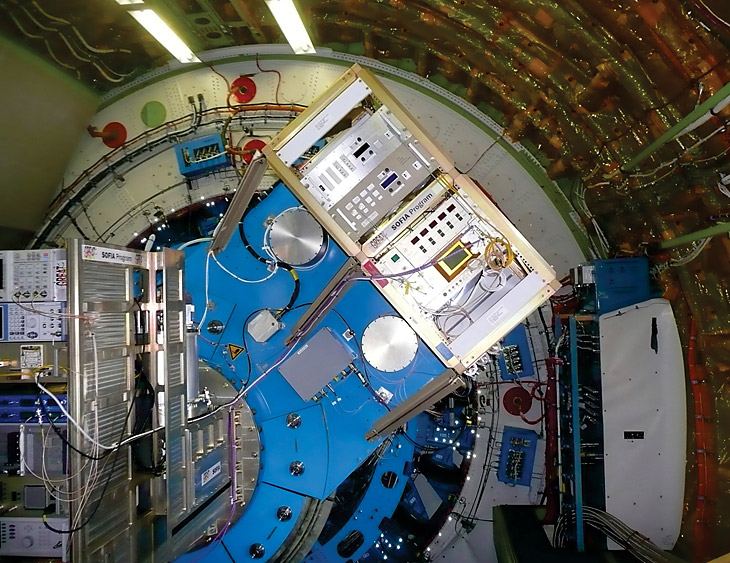An observatory that comes home every morning
DOI: 10.1063/PT.3.1325
The Stratospheric Observatory for Infrared Astronomy (SOFIA), the world’s largest mobile observatory, made a rare stop on the US East Coast in September. This photo, taken at Joint Base Andrews in Maryland, shows the outside of the German-made 2.5-meter telescope, which is housed in a Boeing 747 flown by NASA. The telescope is equipped with an IR spectrometer known as the German Receiver for Astronomy at Terahertz (GREAT), built by a research collaboration that included the University of Cologne and the Max Planck Institute for Radio Astronomy.
Cruising at an altitude of 40 000 feet (12 200 meters), SOFIA flies above 99% of atmospheric water vapor, which gives it access to IR wavelengths that are blocked from ground-based IR telescopes, says Paul Hertz, chief scientist at NASA’s science directorate. Based at NASA’s Dryden Flight Research Center in California, SOFIA typically flies for 10 hours, including the two hours required for the optics to cool to ambient temperature. Because it returns home each day, SOFIA can easily be maintained and upgraded. Indeed, by the end of this year, it will be refitted with a precooling system, vibration dampers, and improved navigation and data systems, Hertz says. Four instruments are awaiting their turn on the observatory, and NASA is currently soliciting proposals for more.
Teachers can apply to accompany scientists aboard SOFIA flights. Mary Blessing, a high school teacher in Herndon, Virginia, calls her flight “the highlight of my career.” She says she was particularly impressed by the number of people involved in building and operating a large scientific instrument.
The mobility of SOFIA allows it to record celestial events not otherwise visible. In June, it flew out over the Pacific Ocean to observe Pluto passing in front of a star. The shadow that Pluto cast on Earth was only 65 miles across and moved at more than 60 000 miles per hour. With the help of some ground-based astronomers, SOFIA’s pilots were able to position it to sample the moving shadow and obtain data on the composition of Pluto’s atmosphere.

Photo taken at Joint Base Andrews in Maryland

More about the Authors
David Kramer. dkramer@aip.org
